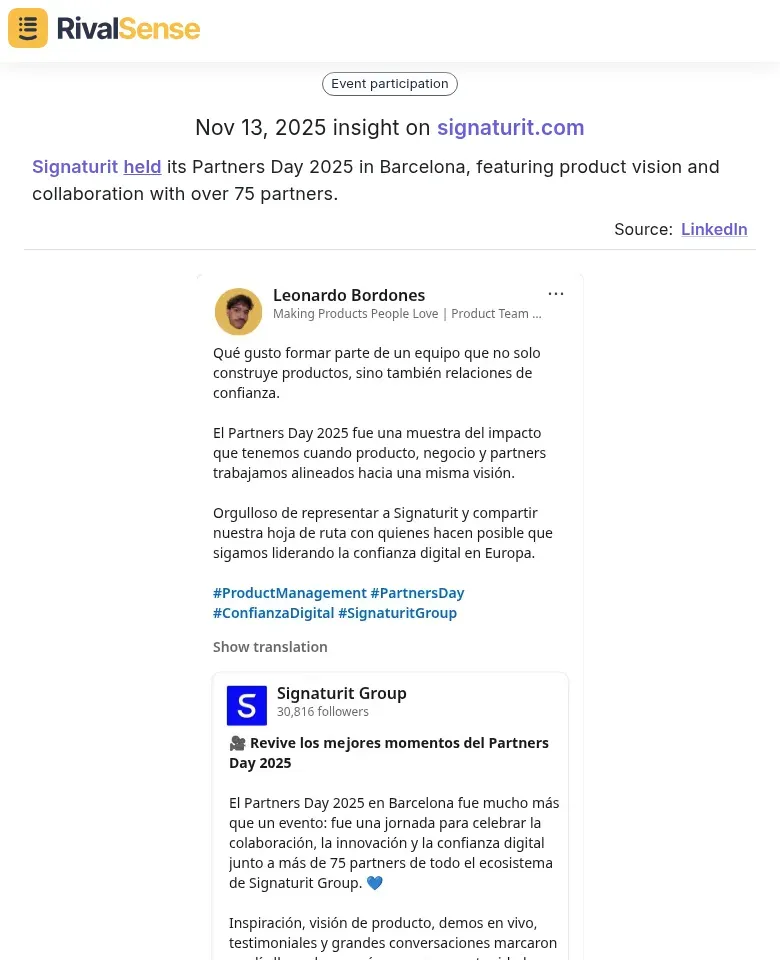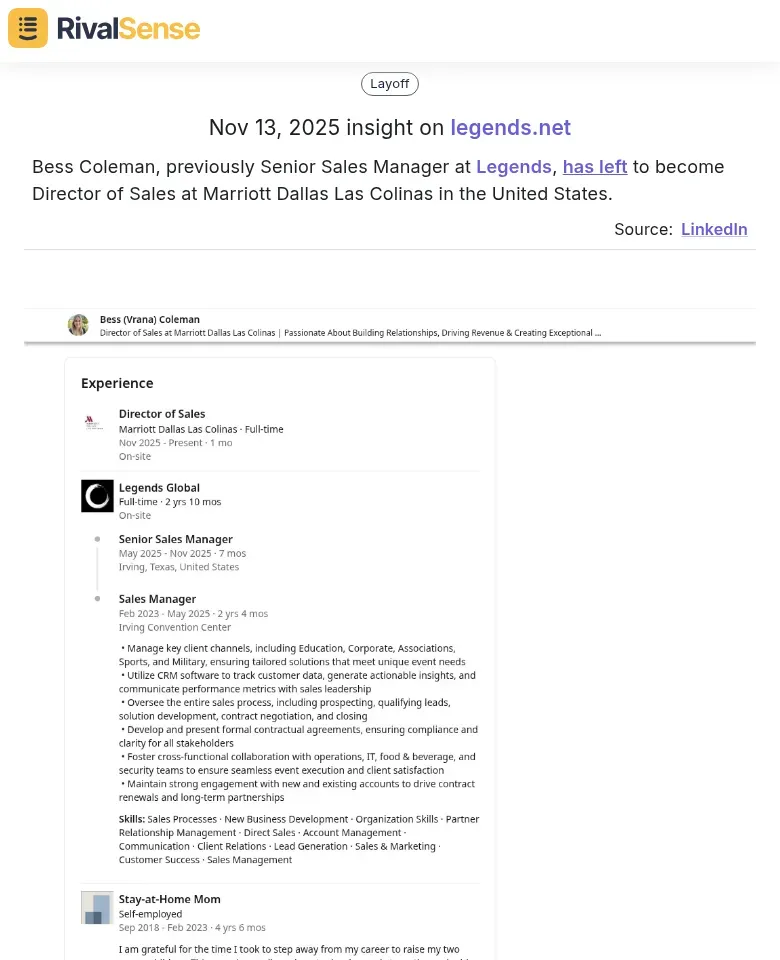Engineering Consulting Competitor Webinar Analysis Guide
In engineering consulting, competitor webinars are strategic goldmines that offer a window into your rivals' minds. They reveal emerging market trends, client pain points, and service innovations—often before they hit the mainstream. By systematically analyzing these sessions, you gain invaluable insights into how competitors position their expertise, address technical challenges, and engage potential clients. This intelligence empowers you to refine your own offerings, anticipate shifts in demand, and maintain a competitive edge in a dynamic landscape.
Start by setting clear objectives: Are you tracking new service launches, identifying gaps in your own webinars, or understanding client concerns? Use a checklist to monitor key elements—topics covered, speaker credentials, audience questions, and engagement metrics. For example, if a competitor's webinar on sustainable design draws high attendance, it signals growing client interest. 📈 Practical tip: Record webinars (with permission) and review them with your team to extract actionable insights. This proactive approach turns competitor activity into your strategic advantage.
Identifying Key Competitors and Their Webinar Activities
Identifying your competitors is the foundation of any effective analysis strategy. In engineering consulting, this means looking beyond direct rivals to include firms with overlapping or complementary services. Primary competitors match your core offerings, while secondary ones might specialize in adjacent areas like sustainability or digital transformation.
Use LinkedIn, industry directories, and client referrals to build a comprehensive list. For tracking webinar activities, leverage tools like RivalSense to monitor competitor event calendars, social media announcements, and email campaigns. Set up Google Alerts for competitor names plus "webinar" to catch real-time updates. Assessing webinar frequency and reach involves analyzing registration numbers, attendee engagement metrics, and post-event content (e.g., recordings, slides). High-frequency webinars with broad reach indicate strong market presence and can reveal partnership strategies. For instance, RivalSense tracked Signaturit's Partners Day 2025 in Barcelona, highlighting their product vision and collaboration with over 75 partners. Monitoring such events helps you anticipate market moves and identify potential alliance opportunities.

Practical steps:
- Create a competitor matrix with columns for webinar topics, dates, and audience size.
- Use this to spot trends and gaps in your own strategy.
- Attend competitor webinars anonymously to glean insights on messaging and audience questions.
Analyzing Webinar Content and Messaging
Analyzing the content and messaging of competitor webinars uncovers their strategic priorities and potential weaknesses. This process helps you understand what topics they emphasize and how they communicate value to their audience. By dissecting their approach, you can identify areas where your firm can differentiate and excel.
Start by cataloging their webinar topics—recurring themes indicate core focus areas, while one-off sessions may signal experimentation. For example, if a rival consistently hosts webinars on AI implementation, they're likely positioning themselves as AI specialists. Evaluate presentation styles: Are they technical deep-dives or high-level strategy talks? Technical presentations suggest deep expertise, while broader sessions may target leadership audiences. Scrutinize case studies—do they highlight measurable ROI or vague success stories? Strong case studies with specific metrics (e.g., '30% cost reduction') signal credible value propositions.
Identify messaging weaknesses: Note if competitors overpromise without evidence or avoid addressing common client pain points. Use this checklist to streamline your analysis:
- ✅ Track topic frequency and recurrence
- ✅ Assess presenter credentials and expertise
- ✅ Monitor Q&A handling and responsiveness
- ✅ Review downloadable resources and follow-up materials
This uncovers gaps—like a lack of post-implementation support—that you can exploit in your own messaging to capture market share.
Extracting Audience and Engagement Insights
Understanding audience behavior and engagement in competitor webinars provides critical clues about client needs and preferences. This analysis goes beyond mere attendance numbers to reveal deeper patterns that can shape your outreach and content strategies. By focusing on who attends and how they interact, you can tailor your approaches for maximum impact.
Start by analyzing attendee demographics—note job titles, industries, and company sizes to identify target segments. Track engagement metrics like attendance rates, drop-off times, and Q&A participation to gauge content relevance. Review audience questions and feedback for recurring themes, such as implementation challenges or feature requests, which highlight unmet needs. For example, RivalSense insights showed that Buffer's Senior Data Scientist found replying to comments on LinkedIn posts increases engagement by about 30%, leading to a free Community feature launch. Tracking such social media engagement can inform your webinar promotion and post-event follow-up, boosting visibility and interaction.

Practical steps:
- Create a checklist to log demographic trends, engagement peaks, and common queries post-webinar.
- Use this data to refine topics, optimize timing, and structure content for higher resonance.
- Implement similar engagement tactics, like active social media responses, to drive attendance and conversions.
Turning Analysis into Actionable Strategies
Transforming competitor insights into concrete actions is where analysis delivers real business value. This step ensures that the intelligence you gather directly influences your service offerings, marketing, and sales approaches. By acting on what you learn, you can outmaneuver competitors and strengthen your market position.
First, identify gaps in competitors' content—like overlooked technical challenges or weak case studies—and develop counter-webinars that address these weaknesses directly. For example, if a rival's webinar lacks real-world implementation examples, host one showcasing your successful client projects with measurable results. Next, integrate findings into your service offerings by adding features that competitors miss, such as post-webinar consulting packages. Update marketing campaigns to highlight your unique strengths, like using competitor quotes in ads to emphasize your superior approach. Equip sales teams with tailored pitches that reference competitor shortcomings, helping them counter objections effectively. Additionally, monitor broader competitor moves; for instance, RivalSense tracked Bess Coleman's move from Legends to Marriott Dallas Las Colinas as Director of Sales. Such management changes can signal shifts in sales strategy or market focus, allowing you to adjust your tactics proactively.

Action plan:
- Establish a continuous monitoring plan with alerts for competitor announcements.
- Assign team members to analyze sessions monthly and maintain a shared insights dashboard.
- Schedule quarterly strategy reviews to adapt and innovate based on trends.
Conclusion and Best Practices
Ongoing competitor webinar analysis is not just a reactive task—it's a proactive strategy for sustained growth and innovation. By consistently monitoring and interpreting competitor activities, you can stay ahead of market curves and refine your consulting practice. Embracing this approach fosters a culture of continuous learning and strategic agility.
To implement this effectively, adopt a structured framework: use tools like RivalSense for automated tracking, set up alerts for key competitors, and maintain a centralized database of webinar summaries. Proactively schedule monthly reviews, assign team members to specific competitors, and create action plans based on insights—for example, if a rival highlights a new sustainability approach, adapt it into your proposals. Best practices include developing a checklist for each webinar (e.g., note key messages, audience questions, and presentation styles) and integrating findings into strategic planning sessions.
🚀 Ready to elevate your competitor analysis? Try RivalSense for free at https://rivalsense.co/ to automate tracking and get your first competitor report today! This tool helps you monitor product launches, pricing updates, events, and more, delivering weekly insights straight to your inbox.
📚 Read more
👉 How Glean's Snowflake Partnership Drove Competitive Intelligence Wins
👉 Unlock Key Account Growth with Competitor Website Monitoring
👉 Boost Productivity with Competitive Car Rental Positioning Strategies
👉 Market Entry Trends: Competitor Regulatory Filing Insights 2025
👉 Decoding Competitor Moves: Schneider Electric's EV Charge Show Strategy
